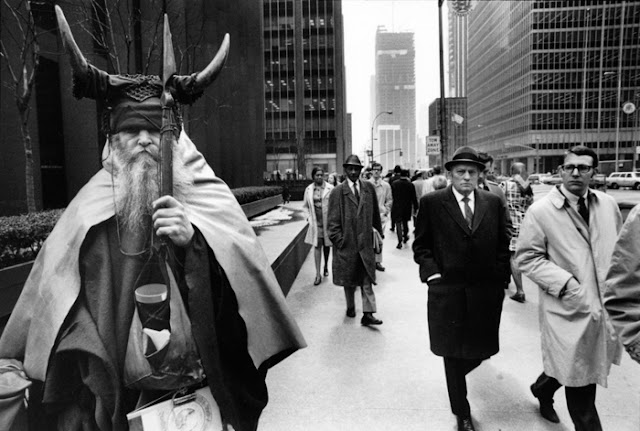A few days before the 4th of July 1932 a fifteen-year-old boy named
Louis Thomas Harden was walking along beside the railroad tracks near Hurley,
Missouri. The local mill pond had recently
flooded, and pieces of inscrutable debris were left beside the tracks when the
water receded.
Louis was a tinkerer, the kind of kid who made wooden models and built
projects out of Popular Mechanics magazine.
So when he found an especially intriguing piece of debris there where he
was walking, he picked it up and took it home with him. The object may have have looked something
like this:
On July 4th itself he examined his new find more closely. It proved to be a detonation cap left behind by a construction crew some distance away, and transported trackside by the flood. As Louis looked more closely at the object it exploded in his face, and despite some desperate and painful surgery he was left permanently blind.
In due course Louis Thomas Hardin
(1916–1999) became Moondog; an all-American original, a composer, musician, and
poet, who between the late 40s and the early 1970s could be seen in various
locations around Manhattan. At one point
he was a fixture in Times Square, but more often he could be found on 6th
Avenue between 52nd and 55th Street. He
looked like this:
Sometimes he
played music, just like any busker, sometimes he tried to sell merch, and other
times he just stood there looking like a Viking. I’m sure he was photographed many thousands
of times, by gawking tourists as well as by serious photographers. The classic image shows him as the still
point, as the other walkers of New York swirl around him.
I’m always slightly surprised by how many blind people there are walking
the streets of Manhattan, especially when you consider how many sighted people
claim to be terrified at the prospect.
I’m sure Moondog had friends and helpers but he obviously
did get around the streets under his own steam. Philip Glass, in his essay “Remembering
Moondog” (which is the preface to Robert Scotto’s authorized biography Moondog, The Viking of 6th Avenue) writes, “he was
so confident in his walk you wouldn’t think he was blind. I wondered how, as a blind man, he managed to
cross the street without an instant of hesitation until he showed me how he listened
to the traffic lights; I had never heard them before in this way.”
































